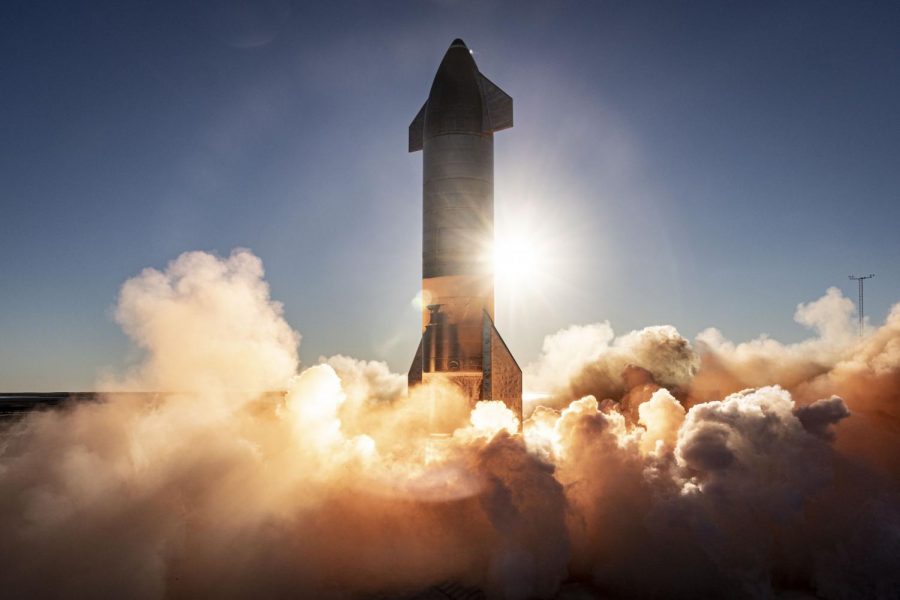Your donation will support the student journalists of The Tide, Richard Montgomery High School's student newspaper. Your contribution will allow us to purchase equipment and cover our annual website hosting costs.
SpaceX Starship launches to high altitude
December 14, 2020
Photo Courtesy of SpaceX via Flickr
SpaceX launched the prototype of the spacecraft “Starship SN8” several miles into the air this Wednesday, December 9 at 5:45 p.m.
SpaceX launched the prototype of the spacecraft “Starship SN8” several miles into the air this Wednesday, December 9 at 5:45 p.m. During its successful 6 minute and 40 second flight, the spacecraft reached an altitude of 8 miles.
Elon Musk, CEO of SpaceX, introduced plans to create a long duration spacecraft for cargo, and eventually passengers, in June 2012. The “Starship SN8” is envisioned to be a completely reusable transportation system. The spacecraft is designed to carry up to 100 metric tonnes into Earth’s orbit, the moon, Mars and beyond. Musk hopes for this to be accomplished by the middle of the 2020s. In August of 2019, Musk provided an update on “Starship SN8” and reported that the high-altitude tests would occur within months and that orbital flights would occur early this year.
As the spacecraft was coming down, all three of the main engines shut down. The spacecraft performed a “belly flop,” with the vehicle falling horizontally on its way down to earth. Just before it reached the ground, the prototype reignited its engines. The spacecraft could not slow down in time and it blew apart as it hit the ground. “Fuel header tank pressure was low during landing burn, causing touchdown velocity to be high & RUD, but we got all the data we needed! Congrats SpaceX team hell yeah!!,” Musk tweeted.
Wednesday’s launch was a result of the launch failure on Tuesday, Dec. 8. When SpaceX attempted to launch the spacecraft on Tuesday, at 5:40 p.m., the prototype auto aborted due to a technical issue in one of its Raptor engines when the spacecraft was only 1.3 seconds from liftoff. Due to the issue, SpaceX postponed the spacecraft’s launch to the following day. “Scrubbed for the day. A Raptor turbopump spin start valve didn’t open, triggering an automatic abort. We’ll figure out why & retry tomorrow.,” Musk tweeted.
RM students had mixed reactions to the launch. “I wasn’t shocked, but at the same time I hoped it would work, since this is already the eight trial,” freshman Sannidhi Korisepati said. Korisepati believes that although the landing was not perfect, the launch was a step towards success. “Space travel is very complicated and definitely needs lots of trial and error,” Korisepati said.
“Since the team working on the spacecraft has seen what has happened during this launch, I feel they will be more cautious when testing this spacecraft again,” freshman Srijani Chakraborty said. “It surprised me because when it was first coming down to the test site, [the spacecraft] seemed very controlled. I was thinking that the landing would be fine, but then when it impacted the ground, it exploded, and that honestly gave me a scare.”
After the launch on Wednesday, SpaceX has started to construct another important piece of the “Starship SN8,” the Super Heavy booster that will loft the spacecraft into orbit. The finishing of the new construction has not been specified, so it is unclear when this spacecraft will take its first successful flight.
